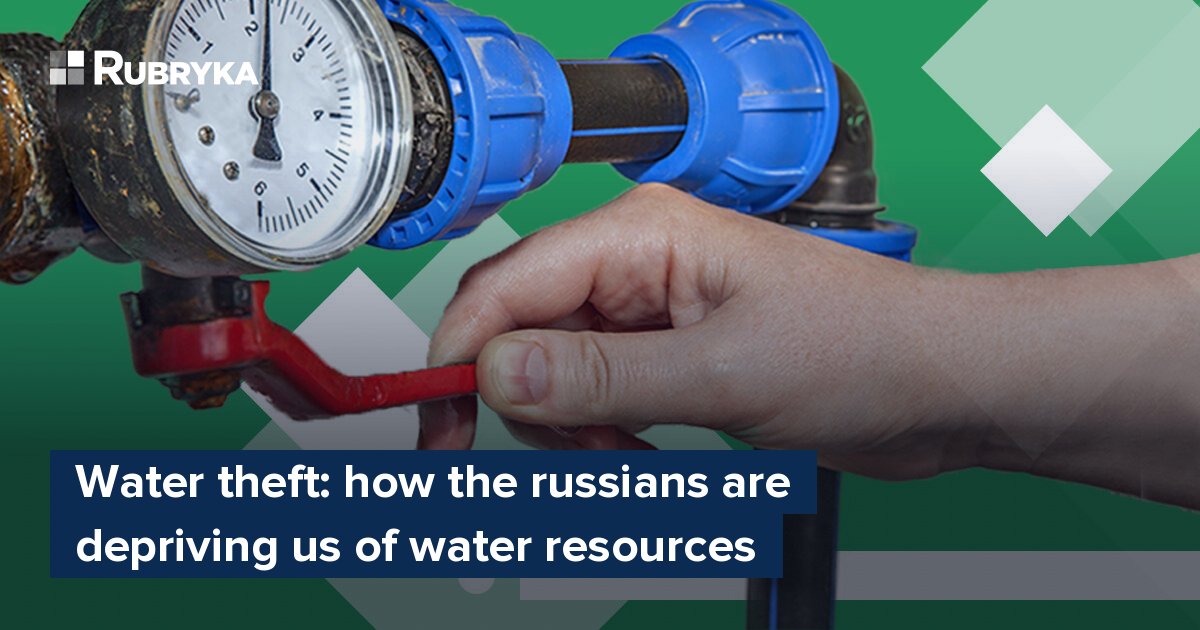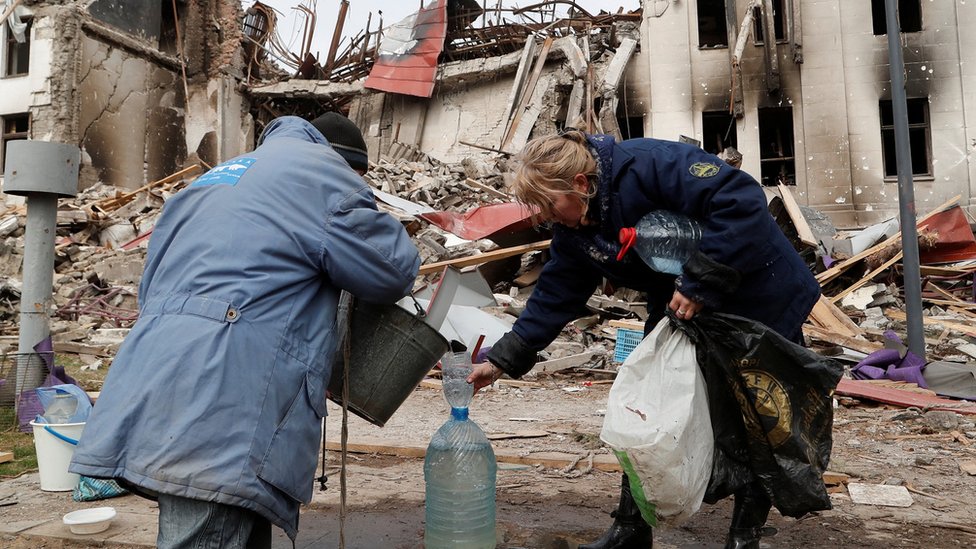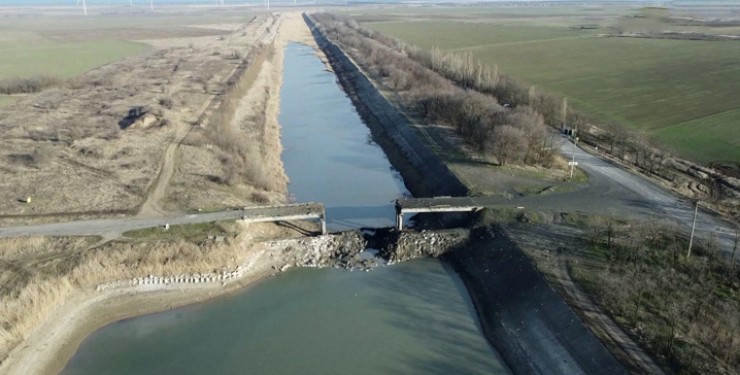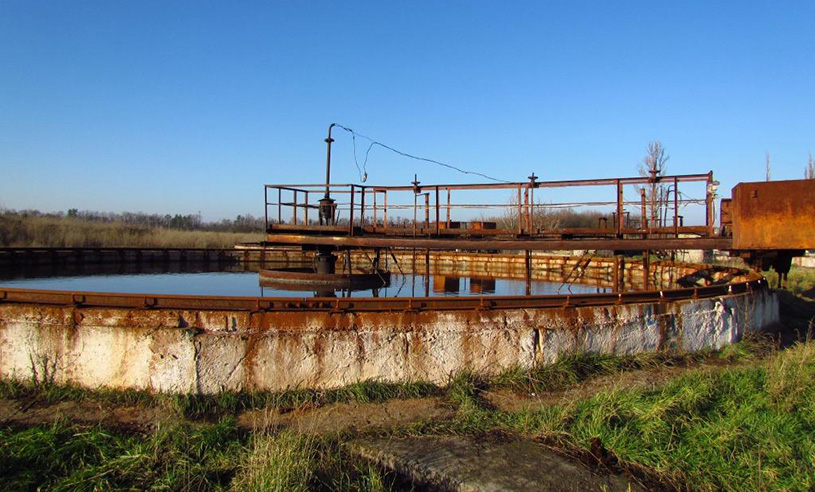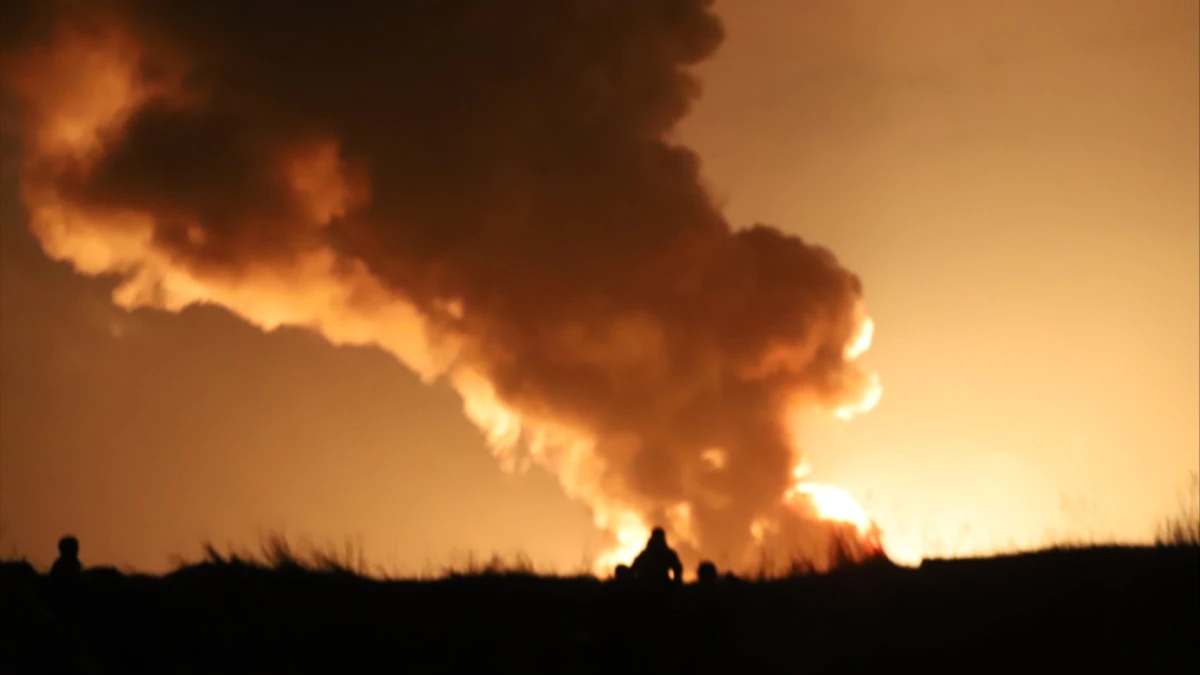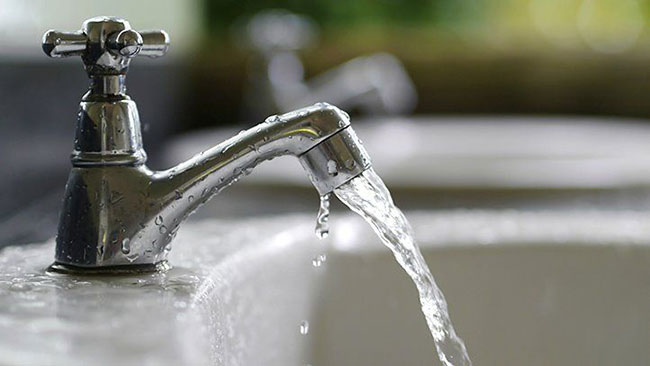
What is the problem?
russians are water terrorists
International studies indicate that wars, beginning with the First World War, are increasingly affecting ecosystems. It is due to the increasing potential of modern weapons, which cause environmental damage. Examples include oil spills in Kuwait's water resources during the Gulf War, or damage to sewer lines and sewage treatment plants in Israel during the Lebanese war in 2006, which led to the siltation of the Mediterranean. Fighting can take place on sea routes, or during military operations water infrastructure may be aimed, such as water pipes, sewage treatment plants, and dams. As a result, it hinders public access to water, which the UN General Assembly recognizes as a basic human right. Such violations can be treated as water terrorism, as the consequences are long-lasting and will affect the health of future generations.
In recent decades, several international organizations have studied and evaluated the impact of armed conflict on water. For example, in 2011, the World Bank reported that the population in conflict-affected countries was disproportionately affected by a lack of safe water access and sanitation. According to the same report, children born in conflict-affected countries are almost twice as likely as others to have no access to a quality water source. The UNICEF report states that children are more likely to die from diseases related to the lack of clean water in the context of protracted armed conflicts than from violence directly related to the conflict itself.
All these consequences threaten Ukrainians as well: the occupiers shell water infrastructure, mine dams, and conduct military operations in the Black and Azov Seas. Let's understand in more detail why it is dangerous and what to do with it now.
russians steal Ukrainian water resources and accelerate water shortages in Ukraine
The use of water as a tool to achieve military goals is not a new phenomenon. A historical study provides an example: much of Iraq's water infrastructure was built as part of Britain's military efforts against the Ottoman Empire during World War I to gain control of the Euphrates and Tigris rivers and gain a strategic advantage.
After the outbreak of a full-scale war in Ukraine, the water became one of the reasons for the russian army to strike the Kherson region. This strike intends to unblock the supply of Dnipro water to the temporarily occupied Crimean peninsula from the Nova Kakhovka region. At the end of February, the occupiers seized the main building of the North Crimean Canal, the Kakhovka HPP, and all hydraulic structures that regulated the water supply from the Kakhovka Reservoir to the Crimean Peninsula. On February 27, the russians demolished a temporary dam, a road bridge, and the canal's main bulkhead to "let" water into Crimea. According to the State Ecological Inspection of Ukraine, russian troops were taking water from the Kakhovka Reservoir due to partial depressurization of the hydraulic structure of the North Crimean Canal. SEI estimates that the occupiers are stealing more than 32 million hryvnias per day.
At the same time, experts note that the North Crimean Canal is a system of hydraulic structures, and simply "letting" water through it is not enough. In particular, commenting on this situation, the Director of the Institute of Water Problems and Land Reclamation of the National Academy of Sciences of Ukraine explained that the system of the North Crimean Canal on the peninsula had to be carefully prepared for water intake. Therefore, getting water into an unprepared canal will do more harm than good. Experts have repeatedly stressed that the condition of pumps can be unsatisfactory after years of downtime, and their restoration can take months. Therefore, the result turned out to be appropriate. Due to the deterioration of the canal infrastructure and hydraulic structures, the water entering the canal is heavily silted up, and its quality can be very low. It begs the question of whether the Dnipro waters captured by the russians as a result of military aggression can somehow save the situation with water on the peninsula? No. But lead to negative consequences for nature and the southern region's population — yes, it can.
"The seizure of water supply facilities by russian troops and the temporary resumption of water supply to Crimea may lead to an increase in water shortages both on the mainland and on the peninsula," said Doctor of Science in Public Administration, Associate Professor Serhiy Zelinsky.
In particular, this is because the southern regions, on the one hand, are the least supplied with water resources and, on the other hand, are the largest consumers. An additional problem is the impact of climate change on these regions. Scientists note that from 2041 it is possible to stop the local surface runoff into low-water rivers in Kherson, Odesa, Mykolaiv, Dnipropetrovsk, and Zaporizhzhia regions. For example, in the Zaporizhia region, the "climate runoff" can be reduced by 10 times, in the Dnipropetrovsk region by 6 times, in the Mykolayiv region by 3.6 times, and in Crimea twice. A study of the climate change impact on Ukraine's water resources, conducted by Ekodia with scientists, also indicates that river water flow in the southern regions will decrease, leading to water shortages in the future.
Why are the russians destroying sewage treatment plants?
It seems that the russians are using strikes on sewage treatment plants as weapons against civilians, and this is not the only case during the war. For example, during the civil war in Syria, the discharge of untreated wastewater into the environment (both intentionally and unintentionally) worsened the water quality in the affected areas. Now it threatens us.
"The greatest damage [in the context of water resources – ed.] is due to the destruction of treatment facilities, dams, and service organizations decommissioning, involved in water supply and wastewater treatment. All of them now end up in reservoirs without treatment, especially where active hostilities took place," commented Oleksii Obrizan, head of the Working Group of State Ecological Inspection international experts, on the issue of damage to water resources during the hostilities.
For example, after the Vasylkiv Operational Department of Water Supply and Sewerage treatment facilities shelling, russian army destroyed the building of the sewage pumping station. As a result of such actions, the return water enters the Dnipro River without any treatment, which is already dangerous due to the spread of infectious diseases among the population consuming this water and the flowering of water, which eventually leads to fish extinction and overgrowing.
In addition, the destruction of infrastructure and industrial facilities can lead to the ingress of pollutants into water bodies. As a result, we get water pollution:
"We have received information about damaged chemical waste tanks at Azovstal, which can now potentially enter the waters of the Sea of Azov. It may jeopardize the existence of certain marine bio culture species altogether. But whether the Sea of Azov will disappear as a living biosystem is difficult to say because neither Ukrainian nor international ecologists have access to it for at least simple monitoring," Oleksii Obrizan suggests.
Speaking about pollutants from other enterprises, "all types of enterprises use something," ecologist Maksym Soroka said earlier in a comment for Rubryka. That is, hitting any enterprise can be dangerous, and destroyed treatment facilities and pumping stations are not able to purify water and supply it to Ukrainians.
How will the war affect the environment of Ukraine and other countries in the long run?
Hitting water treatment plants and other water infrastructure is not all the damage caused by hostilities. War also causes indirect damage to the environment. The strategic goal of the occupiers in Kharkiv, Chernihiv, Zhytomyr, Kalynivka, Lviv, Dubno, Lutsk, and other cities was oil depots. The combustion leads to pollution of both soil and water resources. The oxides from the air released during combustion fall into the clouds and then become acid rains far away from the place of entry into the air. And even after the explosions, sulfur settles on the ground, which turns into sulfuric acid after rain. All this has a cumulative effect:
"Maximum single concentrations, such as after explosions, have an instant effect. Such substances cannot last long in the air, so they come in the form of precipitation and accumulate in the soil. And then everything will depend on the wind rose. Even after the war, no one can guarantee that neighboring countries such as Poland, Slovakia, Hungary, or Romania will not be affected by polluted rainfall and, as a result, polluted soil," explains Oleksii Obrizan.
So far, there are not enough data to make reliable predictions about the consequences for Ukraine, but similar studies conducted after the civil war in Sri Lanka show higher than usual concentrations of heavy metals, fluorine, and calcium in groundwater waters of these areas.
By the way, even population movement is one of the significant factors in the depletion of water resources because of the increasing demand for water in the region and the need to increase the potential of water treatment facilities.
Another problem is that water from artesian wells can also become unusable. Artesian waters are considered a strategic reserve of the state, and every individual has access to them – in Kyiv alone, we have 376 artesian wells. The intake of such water is carried out at a depth of at least 300 meters. It is a guarantee that the water does not contain harmful substances, heavy metals, or radionuclides. They simply can not get there, so the water from artesian wells is considered the cleanest and safest. However, nowadays, as a result of hostilities and destruction, even these wells are at risk of contamination.
"One hit of the pollutant is enough. It spreads to the entire horizon and makes the water unusable for a long time because the groundwater exchange takes hundreds of years and surface water exchange takes months," says ecologist Oleksii Obrizan.
What is the solution?
Water supply planning in wartime
Water resource theft during the war and russia's water terrorism can cause a sharp change in sector water consumption. Therefore, it is important to approach the planning of water supply in the southern regions comprehensively, because the irrational use of water can lead to an increase in water scarcity.
In recent years, Ukraine has been modernizing pumping stations for water supply and replacing emergency and worn-out pipelines. It is the key solution for improving the drinking water quality, increasing the efficiency of technological processes and reliability of water supply systems, and ensuring the rational use of material and energy resources. The implementation of these measures will contribute to the rational distribution of water flows and optimize the pressure in the distribution network, save energy resources up to 40% and reduce water losses in the system, reduce the actual volume of its supply and pumping, and reduce leakage.
Equally important is the proper use of water resources. And here we should not talk about how much water the population consumes. Thus, since 2004, Ukrainians have started consuming almost twice as much water for household needs. If in 2004 they consumed about 2.5 billion cubic meters of water, in 2018 — only 1.17 billion cubic meters. The most unregulated area of water use in Ukraine is agriculture. It is irrigation that consumes a lot of water resources, so here as well, we are faced with government regulation.
If you consider short-term and practical solutions, you can pay attention to what kind of water you consume, and try to analyze it in the laboratory or conduct it yourself with a test strip.
However, the only solution to stop depleting and polluting water resources is to end the war and win. To donate to the army, help volunteers, and bring Ukraine closer to victory in all possible ways.
Newsletter
Digest of the most interesting news: just about the main thing



